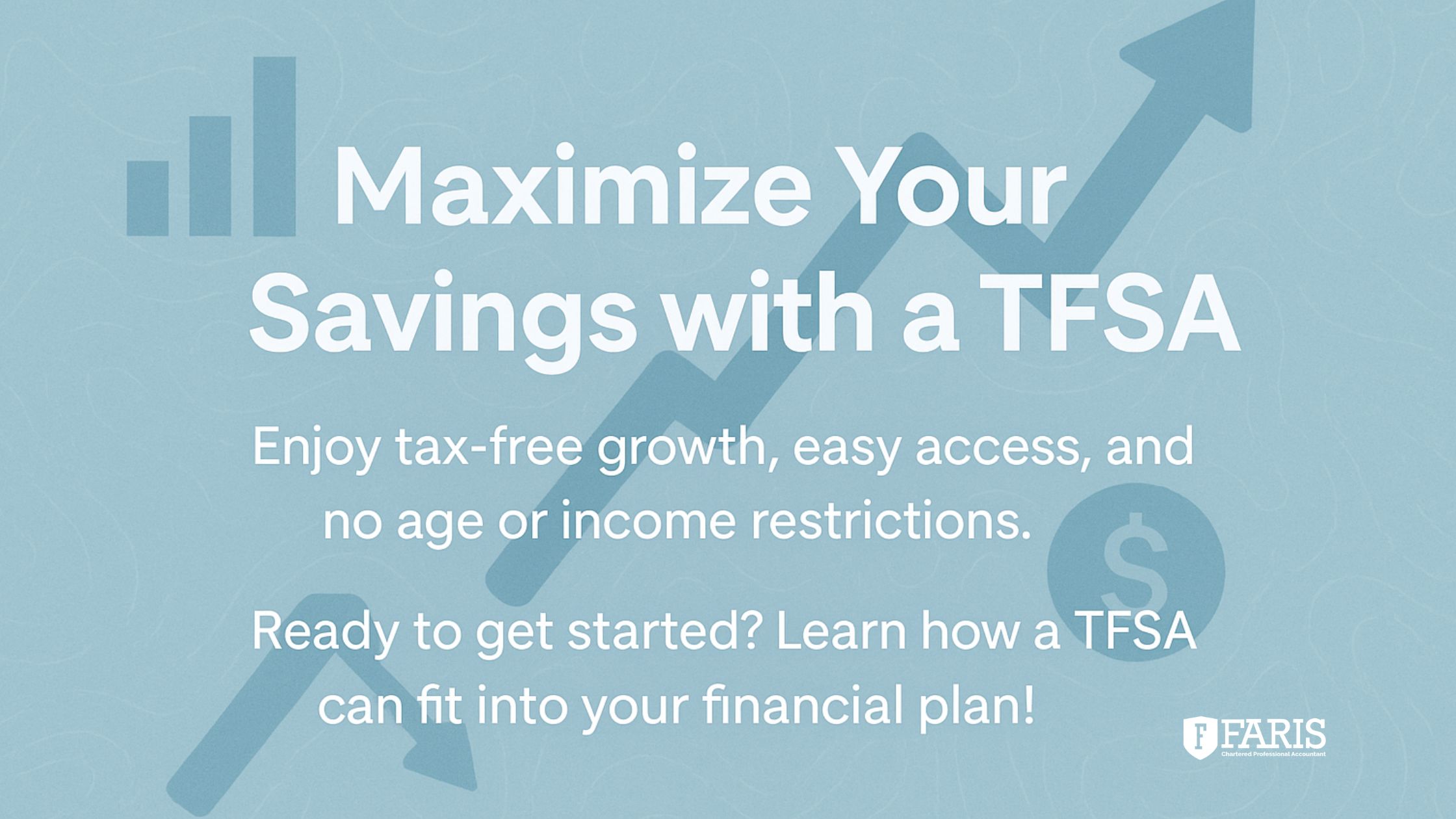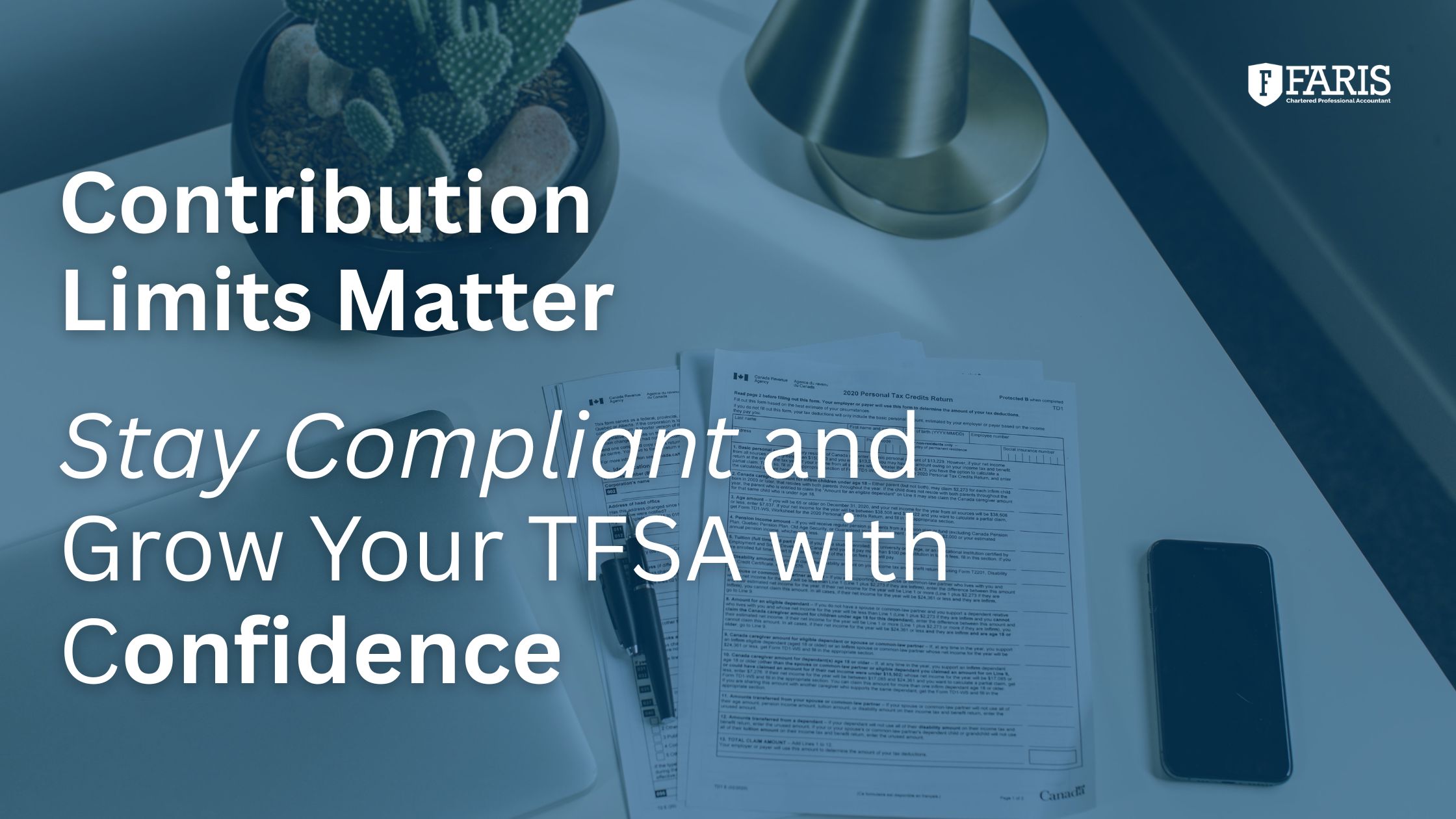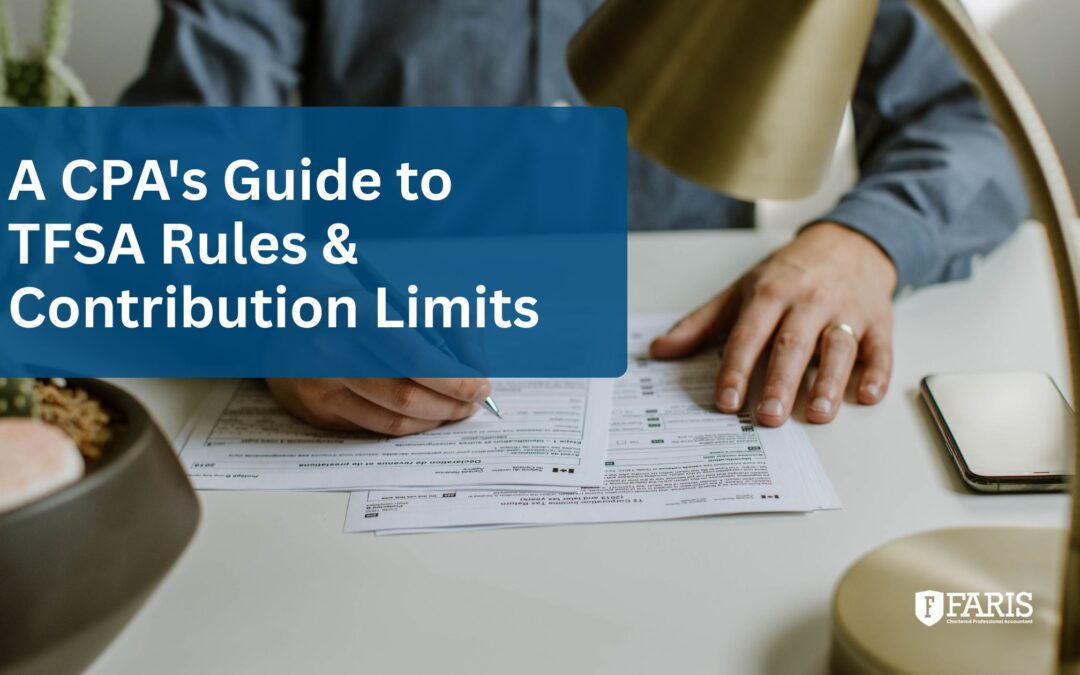If you’re like many Canadians, you’ve probably heard about Tax-Free Savings Accounts but aren’t exactly sure how they work, or whether you’re making the most of yours. Even though TFSAs have been around for over a decade, misconceptions are still common. Some people assume they’re just simple savings accounts. Others avoid them altogether because they think they’re too complicated or not relevant to their financial situation.
The truth is, a TFSA can be one of the most flexible and powerful tools available for building wealth in Canada. But to use it effectively, you need to understand how it fits into your overall financial plan and how the rules around contributions, withdrawals, and investment options actually work in practice. Whether you’re just getting started or trying to correct past mistakes, a clearer understanding of TFSAs can help you avoid penalties, missing the tax filing deadline, and make smarter decisions with your money.
TFSA Eligibility and Account Types
While the TFSA is a flexible and powerful tool, not everyone immediately qualifies, and not all accounts are structured the same way.
Who Can Open a TFSA
To open a TFSA, an individual must:
- Be a resident of Canada;
- Have a valid Social Insurance Number (SIN);
- Be at least 18 years old.
Eligibility begins on the day you turn 18, and contribution room accumulates from that year onward, even if you don’t open a TFSA right away. It’s important to note that the age threshold differs slightly in provinces like British Columbia, Nova Scotia, and others where the age of majority is 19. While a person technically accumulates contribution room at 18, financial institutions in those provinces may not permit opening a TFSA until age 19.
Non-residents of Canada can own a TFSA but cannot contribute without triggering penalties. If contributions are made while a person is a non-resident, a 1% tax per month applies to each contribution until it’s withdrawn or the person becomes a Canadian resident.
Types of TFSA Accounts
There are three main types of TFSA accounts, each with different use cases and product access:
- Deposit TFSAs
These accounts are typically offered by banks and credit unions and include high-interest savings accounts or GICs (Guaranteed Investment Certificates). They’re best suited for conservative investors looking for principal protection and modest returns. - Mutual Fund TFSAs
Managed by investment firms, these accounts allow you to hold mutual funds within a TFSA. They’re best for investors seeking long-term growth through diversified portfolios. - Self-Directed TFSAs
Self-directed accounts allow you to buy and sell individual securities such as stocks, bonds, ETFs, and other qualified investments. This structure is ideal for more experienced investors and offers the most flexibility and control, but it also carries a higher risk profile.
Each TFSA type has its own administrative structure, fee schedule, and investment options. It’s important to choose the account type based on your financial goals, risk tolerance, and investing experience.
Key Considerations
- All types of TFSA accounts are subject to the same contribution limits and tax rules.
- You can hold more than one TFSA, but the combined contributions across all accounts must not exceed your available room.
- Withdrawals are tax-free and do not affect government benefits like OAS or GIS.
Understanding eligibility and account structures is the first step toward maximizing your TFSA’s long-term tax advantages. The next step is ensuring contributions, investments, and withdrawals are properly managed to avoid overcontributions and triggering a CRA audit.
How to Open and Manage a TFSA
Opening a Tax-Free Savings Account in Canada is relatively straightforward, but maximizing its long-term value requires deliberate planning and informed management.
1. Choosing a TFSA Provider
Canadians can open a TFSA at most financial institutions, including:
- Banks and credit unions. Ideal for conservative savers who prefer GICs or high-interest savings accounts.
- Online brokerages. Suitable for investors who want to trade equities, ETFs, bonds, and other market securities within their TFSA.
- Robo-advisors. A good option for experienced individuals seeking low-cost, automated portfolio management without hands-on involvement.
- Insurance companies. Often offer TFSAs that hold segregated funds, providing creditor protection and potential estate planning advantages.
When choosing a provider, evaluate their investment options, account fees, customer service, digital tools, and how easily you can transfer or consolidate accounts. If your investment strategy includes active trading or a diverse portfolio, prioritize flexibility and cost-efficiency.
2. Opening the Account
To open a TFSA, you must:
- Be a Canadian resident with a valid Social Insurance Number (SIN)
- Be at least 18 years old (19 in B.C., Nova Scotia, NL, NB, NU and YT, where that’s the age of majority)
The application process typically includes providing personal identification, selecting the account type (savings, self-directed, managed), and designating beneficiaries. It’s best to set up online access to track contributions and performance.
3. Managing Your TFSA for Maximum Benefit
Contribution Tracking. Always stay within your annual and cumulative contribution limit. Overcontributions incur a 1% monthly penalty on the excess amount. You can check your current TFSA room through your CRA My Account.
Strategic Asset Allocation. TFSAs are most efficient when used to shelter growth-oriented investments. Consider placing the following in a TFSA:
- Equities with high expected returns
- ETFs or mutual funds with long-term growth potential
- Interest-earning instruments if in a low tax bracket
Avoid holding U.S. dividend-paying stocks in a TFSA, as these are subject to withholding tax and not eligible for foreign tax credits.
Reinvestment Timing. Withdrawals can be re-contributed, but not in the same calendar year unless you have unused room. Reinvesting too soon may trigger an overcontribution.
Record-Keeping and Reporting. Although TFSA income is tax-free and not reportable, keep detailed records of contributions, withdrawals, and transfers. This helps reconcile any discrepancies with the CRA and supports your tax planning strategies.
Periodic Review. Reassess your TFSA holdings annually. Life changes, market conditions, and shifting goals may require reallocating assets or changing providers.

TFSA Benefits and Comparisons to Other Accounts
A TFSA offers several strategic advantages for Canadian taxpayers seeking flexible, tax-efficient savings options. Its structure allows for tax-free investment growth, straightforward withdrawals, and wide eligibility, making it a cornerstone of modern personal financial planning.
Key Advantages of a TFSA & Interaction with Government Benefits:
- Tax-Free Investment Growth
Contributions to a TFSA are not tax-deductible, but all income earned within the account, whether from interest, dividends, or capital gains, is completely tax-free. This allows investments to compound without tax erosion. - No Tax on Withdrawals
TFSA withdrawals are not considered taxable income. This allows for access to funds at any time, with no tax consequences or clawbacks of income-based government benefits like Old Age Security (OAS) or the Guaranteed Income Supplement (GIS). - Contribution Room Reinstatement
Any amount withdrawn from a TFSA is added back to your contribution room in the following calendar year. This makes TFSAs well-suited for both short- and long-term financial goals, including emergency funds, home purchases, or retirement. - No Age Restrictions or Income Requirements
As long as the individual is a Canadian resident aged 18 or older with a valid SIN, they can contribute to a TFSA regardless of income level. There is also no maximum age for contributions, unlike RRSPs, which convert to a RRIF at age 71.
TFSA vs. RRSP: Key Differences
| Feature | TFSA | RRSP |
| Tax Treatment on Contributions | Not deductible | Deductible from taxable income |
| Tax Treatment on Withdrawals | Tax-free | Taxable as income |
| Impact on Government Benefits | No impact | May reduce income-based benefits |
| Contribution Room | Based on a fixed annual limit (indexed) | Based on 18% of earned income (to a max limit) |
| Age Restrictions | No upper age limit | Must convert to RRIF by age 71 |
| Best Use Case | Flexible savings, short- and long-term goals | Retirement savings, income smoothing |
TFSAs and Financial Planning
TFSAs and RRSPs are not mutually exclusive and often work best when used together in an investment portfolio. A TFSA is generally more beneficial for individuals in lower tax brackets or those who prioritize liquidity. An RRSP, by contrast, provides immediate tax relief and is more effective for high-income earners needing long-term retirement savings with a lower expected future tax rate.
Understanding how to leverage both accounts strategically, depending on your income level, cash flow needs, and retirement planning goals, is essential for maximizing after-tax wealth. Faris CPA can help tailor the optimal mix of TFSA and RRSP contributions based on your specific financial situation.
Rules for TFSA Contributions and Withdrawals
While the Tax-Free Savings Account offers significant flexibility, it operates under clearly defined rules around contributions, withdrawals, and the treatment of contribution room. Misunderstanding these rules can result in costly penalties, especially for over-contributions or misjudged timing.
Contribution Guidelines
- Annual Contribution Limit
Each year, the Canada Revenue Agency (CRA) sets a maximum dollar limit for TFSA contributions. For 2025, the annual limit is $7,000. Unused room from previous years carries forward indefinitely. - Cumulative Limit
The total amount you can contribute depends on your age and residency status since 2009 (the year TFSAs were introduced). - Over-Contribution Penalties
Exceeding your available contribution room triggers a penalty tax of 1% per month on the excess amount until it is withdrawn or new room becomes available. The CRA does not notify individuals of their remaining contribution limit throughout the year, so proactive monitoring is essential. - Non-Resident Contributions
As stated earlier, if you contribute to a TFSA while you are a non-resident of Canada, the contribution is subject to a 1% per month tax until withdrawn (or you reinstate your Canadian residency). Non-residents do not accumulate new contribution room.
Withdrawal Rules and Timing Considerations
- Withdrawals Are Unrestricted, But Impact Future Room
You can withdraw any amount at any time for any reason. However, the amount withdrawn is not immediately available for recontribution in the same calendar year unless you have unused room. The withdrawn amount is added back to your contribution room on January 1 of the following year. - Recontribution Timing Matters
Recontributing withdrawn funds in the same year without sufficient available room results in an over-contribution, even if you intend to “replace” what was removed. Always confirm your available room with the CRA through My Account or a Form RC343 summary before making same-year recontributions. - Transfers Between TFSA Accounts
You can transfer funds between TFSA accounts at different institutions without affecting your contribution room, but only if done as a direct transfer. Withdrawing and re-depositing manually may inadvertently trigger a recontribution and cause an overage if not handled properly.
For taxpayers who frequently contribute and withdraw, particularly those using TFSAs for mid-term investment strategies, precision around timing and room tracking is a critical part of the investment process.
Calculating and Tracking TFSA Contribution Room
TFSA contribution room is cumulative, meaning unused amounts from previous years carry forward indefinitely, and withdrawals can increase your future room depending on the timing of your transactions.
How TFSA Contribution Room is Determined
Each eligible Canadian resident aged 18 or older accrues TFSA contribution room annually. The annual limit is set by the federal government and indexed to inflation in $500 increments. Since its introduction in 2009, the annual contribution limits have varied, and the cumulative maximum depends on the year you became eligible:
- If you were 18 or older in 2009 and a Canadian resident since then, your total contribution room by 2025 is $95,000.
- If you became a resident or turned 18 after 2009, your available room starts accumulating from the year you met both criteria.
TFSA contribution room consists of three components:
- The annual limit for the current year
- Any unused room from previous years
- Any withdrawals made in prior years (added back on January 1 of the following year)
Tracking Contributions and Withdrawals
The Canada Revenue Agency provides an official record of your TFSA contribution room through the My Account portal and your most recent Notice of Assessment. This record typically reflects data from the prior tax year. If you’ve made contributions or withdrawals in the current year, you must keep your own up-to-date records, as the CRA may not yet reflect these transactions.
You can track contributions and withdrawals by:
- Maintaining a spreadsheet or financial journal
- Reviewing monthly account statements from your TFSA provider(s)
- Using financial management apps that support registered account tracking
It’s especially important to track contributions across multiple TFSA accounts, as the CRA limits apply collectively, not per account.
Example: Calculating Contribution Room
Suppose you:
- Were 18 in 2018 and a resident of Canada since then
- Have not contributed to a TFSA before
- Plan to contribute in 2025
You’d accumulate the annual limits for 2018–2025:
- 2018 to 2022: $6,000 × 5 = $30,000
- 2023: $6,500
- 2024: $7,000
- 2025: $7,000
Total available contribution room: $50,500
If you contribute $20,000 in 2025, your remaining contribution room would be $30,500. If you withdraw $5,000 in 2025, your room on January 1, 2026, would increase by $5,000, bringing your available room to $35,500, assuming no new contributions or changes in annual limits.

Credit: shanf from Getty Images Signature
Annual and Historical TFSA Contribution Limits
The Tax-Free Savings Account (TFSA) was introduced to encourage Canadians to save by allowing investment income and withdrawals to remain tax-free. While the limit is consistent across all eligible Canadians, it can vary from year to year.
Here is a summary of the annual TFSA limits since inception:
- 2009–2012: $5,000
- 2013–2014: $5,500
- 2015: $10,000 (a one-time increase not indexed to inflation)
- 2016–2018: $5,500
- 2019–2022: $6,000
- 2023: $6,500
- 2024–2025: $7,000
These figures represent the maximum contribution per calendar year, not including any unused room from prior years or amounts withdrawn. Once the limit is set for a given year, it applies universally regardless of income level.
Penalties for Over-Contribution
The Canada Revenue Agency monitors contributions across all TFSA accounts by requiring financial institutions to report transaction data annually. Over-contributions are typically identified through this reporting, often months after the excess has occurred, making proactive record-keeping essential.
Once an excess contribution is detected, the CRA will issue a letter or formal assessment outlining the amount of overage and the period during which it remained in the account. If the excess is not corrected promptly, the penalty continues to apply for each month the overage remains. Note that CRA assessments are not the final word. Learn how to dispute a CRA assessment you disagree with.
Addressing TFSA Over-Contributions
To resolve an over-contribution, the excess funds must be withdrawn from the TFSA as soon as possible. Simply ceasing further contributions will not stop the penalty unless the account is brought back within the allowable limit. In some cases, the CRA may accept a written request to waive or cancel the penalty if the over-contribution was a genuine mistake and promptly addressed. This typically requires submitting Form RC4288 (Request for Taxpayer Relief) along with supporting documentation.
It’s worth noting that over-contributions may also affect future TFSA eligibility and audit risk, particularly if there is a pattern of non-compliance. Individuals managing multiple accounts or making frequent contributions and withdrawals should maintain detailed records to avoid accidentally exceeding the allowable limit.
If you suspect you’ve contributed too much, consult the CRA’s My Account portal or call their TFSA helpline for clarification. Timely action and transparency can help minimize the financial and administrative burden associated with an over-contribution issue.
Faris CPA, Your Go-to for Tax & Financial Consulting
If you have questions about your TFSA contributions, overages, or how this account fits into your broader tax strategy, contact Faris CPA. Our team provides tailored guidance and representation for tax problems backed by years of experience helping Canadians make informed financial decisions.




